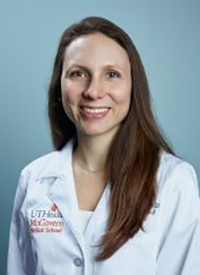More than 14 million people are cancer survivors in the United States, a number expected to rise to almost 19 million by the year 2024. Many survivors say they felt very supported during treatment but found it hard to transition to a new way of life when medical care ended. In response to these and other needs, facilities across the Memorial Hermann Cancer Network offer rehabilitation programs to help cancer survivors move forward in their lives. Sandy Miller, RN, NE-BC, senior vice president of the oncology service line at Memorial Hermann Health System, and Carolina Gutiérrez, MD, a fellowship trained physiatrist who focuses her practice on cancer rehabilitation at TIRR Memorial Hermann and addresses current issues in cancer survivorship and rehabilitation.

Sandy Miller: As a new nurse, my first job was on the oncology floor. In those days there was very little we could do for our patients except to provide pain and symptom management. We took care of our patients often for months, and got to know them and their families very well. In the last 30 years, treatments and outcomes have improved dramatically. There’s so much momentum now toward finding a cure, which makes this an exciting time to work in oncology. Patients are aware of this and want to be able to resume their former lives to the greatest extent possible and as quickly as possible. It’s a great privilege for us as nurses to work with cancer survivors and to honor them by respecting their needs, time and individual goals.
A big part of my motivation comes from my own life. My grandmother died of breast cancer when I was five. She was a fine person – generous and loving. It wasn’t until I got older that I recognized what a huge influence she had on my thinking and outlook on life, even though I was still very young when she died. I always wish I’d had her in my life much longer. Thinking about the life she could have had makes it important for me to stay committed to this work.
Q: The Memorial Hermann Cancer Network offers the entire continuum of cancer care – from prevention, screening, diagnosis and prehabilitation through rehabilitation and survivorship support. The network now includes eight Cancer Centers located across the city, along with 19 Breast Care Centers, two survivorship centers and eleven TIRR Memorial Hermann Rehabilitation Network locations focused on cancer rehabilitation. What do you hope to add to this in the next year?
Sandy Miller: We have a great opportunity to bring together the strong components we already have in place and shape them into an easily accessible continuum of care, from prevention and screening through supportive care and survivorship. Our pillars are in place in terms of raising awareness and screening patients for lung, breast, colorectal, and head and neck cancer. Our community outreach programs are strong, and we have excellent Oncology Nurse Navigators, who help patients at every point of interaction with the health care system before, during and after treatment. We’re now focused on expanding our entire system of care for survivors in ways that meet all of their post-treatment needs. This includes cancer rehabilitation and programs that support healthy lifestyles as patients continue ongoing surveillance with their oncologists and other specialists.
Cancer rehabilitation is emerging as a very important component of our cancer program, with a particular focus on prehabilitation for specific patient populations. Head and neck cancer patients always come to mind. Most undergo surgery, chemotherapy and radiation, which assault the lymphatic system and create problems with swallowing, movement of the head and neck and, in most patients, lymphedema. Depending on the treatment they undergo, breast cancer patients may require prehabilitation to improve range of motion in advance of radiation therapy or to improve condition in preparation for chemotherapy. Education about lymphedema management is also important. The literature supports prehabilitation, and our experience has shown that patients who have access to it have much better functional and quality of life outcomes.
Q: As we’ve become more efficient at curing cancer, health care providers have started looking at the aftermath of treatment. Patients may be cured, but some have great difficulty adjusting to their “new normal.” Dr. Gutiérrez, what are the potential benefits of cancer prehabilitation?

The goal of prehabilitation is to prevent or lessen the severity of anticipated treatment-related problems that could lead to later disability. A comprehensive baseline assessment is critical to creating a successful prehabilitation plan for each patient. By educating patients on the benefits of a prehabilitation plan, we are giving them the opportunity to be active participants in their own cancer care. Early engagement and compliance with their rehabilitation plan can have highly desirable results – fewer deficits after treatment, better outcomes, better function and improved quality of life. We are giving patients the tools and motivation to help preserve function, helping them become stakeholders in their journey to healing and recovery.
Q: You’ve forged a unique relationship with Dr. Ron Karni, the director of the division of head and neck surgical oncology in the department of Otorhinolaryngology at McGovern Medical School at UTHealth. Talk a little about that relationship and how it benefits patients.
Dr. Carolina Gutiérrez: I’m very enthusiastic and passionate about the collaborative work we do with head and neck cancer patients and hope to extend it to other diagnoses. Dr. Karni and I have been seeing patients together in clinic for nearly two years. A cancer treatment plan for individuals with head and neck cancer can include a combination of surgery, radiation and/or chemotherapy. Addressing symptoms and deficits arising from the cancer and its treatment presents unique challenges that require the combined expertise of an interdisciplinary team. Symptoms commonly experienced by our head and neck cancer patients include fatigue, difficulty swallowing and loss of range of motion. My goal is to develop and coordinate a personalized cancer rehabilitation plan for each person we see – understanding how cancer has impacted their life journey and helping them achieve their goals of healing and recovery. A thorough understanding and assessment of pre-existing health conditions and current and anticipated functional limitations helps guide my cancer rehabilitation plan.
Cancer rehabilitation specialists can help patients by working with referring physicians to manage functional deficits, symptoms and improve quality of life, increasing patient satisfaction and improving outcomes.
Q: You’ve said that cancer care and survivorship programs are in many ways grassroots movements…
Sandy Miller: Today’s patients are better informed than ever before, and social media has given us an opportunity to communicate with them in new and inventive ways. As patients go through cancer treatment, they’re sharing their experience publicly on blogs, Facebook and Twitter. Patients who have just received a diagnosis of cancer are very receptive to information from others about where to find the best care and what that care feels like, which has led to a real grassroots movement focused on improving the cancer experience. As a community based cancer treatment program with the full range of care from screening to survivorship, Memorial Hermann is well positioned to help patients improve their overall treatment experience. If they need help with nutrition, daily living activities, socioeconomic concerns or emotional and spiritual issues, we can provide it. Our No. 1 goal is a tightly integrated program that connects all patients, regardless of the point in their care, to the resources they need close to home when they need them.